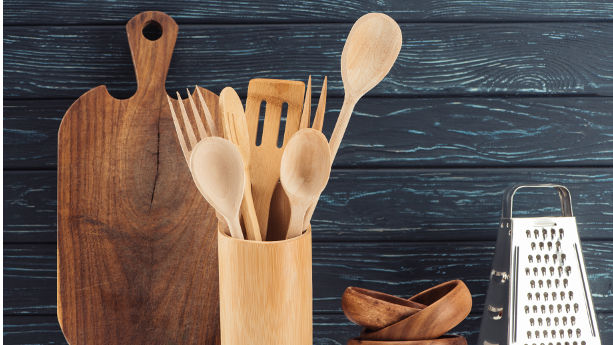
The EU Food Contact Materials Framework Regulation 1935/2004 covers plastic, ceramic, metal and other food contact materials. In this guide, list kitchen appliances, food packaging, wooden composites and other products covered by the scope of the regulation.
Content Overview

FREE CONSULTATION CALL (US, EU & UK)
- Request a free 30-minute call with Ivan Malloci to learn how we can help you with:
- Find product requirements
- Certification and labeling
- Lab testing
Electrical Kitchen Appliances
Electrical kitchen appliances such as ovens, coffee makers, toasters or similar appliances that are intended to come in contact with food, should comply with the EU food contact material Framework regulation. Depending on the material of these food contact products, i.e. metal, plastic, stainless steel, ceramic, importers should refer to the corresponding legislation before the importing process.
Further, electrical kitchen appliances should also comply with the Low Voltage Directive, EMC Directive, and RoHS.
Examples
- Electrical cookers
- Ovens
- Coffee machines
- Juice mixers
- Blenders
- Electric kettles
- Toasters
Plastic Kitchen Products
For plastic kitchen products Commission Regulation (EU) 10/2011 was formulated under the EU FCM Framework Regulation 1935/2004, which sets out rules on the composition of plastic FCMs and establishes a list of substances that are permitted for use in the manufacture of plastic FCMs.
For instance, FCMs containing formaldehyde or melamine must comply with the following specific migration limits:
- Formaldehyde: 15 mg/kg
- Melamine: 2.5 mg/kg
Examples
- Plastic casseroles
- Plastic containers
- Plastic bowl tub
- Plastic plates
- Plastic vegetable baskets
- Plastic coffee mugs
- Plastic insulated plastic water containers
- Plastic water jugs
- Plastic fridge water bottle
Wooden & Bamboo Plastic Composite Kitchen Products
Note that some plastic food contact materials and articles use ground bamboo or wood powder as fillers or additives. These materials are generally not as shiny as their melamine equivalents but look and function in a similar way. Such products are therefore still considered to be plastic products and are subject to the regulation of Commission Regulation (EU) 10/2011.
In addition, the use of bamboo or wood power as additives in the manufacture of plastic food contact materials and articles must be given authorization by the EU, according to Articles 9 – 11 of Regulation (EC) No 1935/2004.
Examples
- Wooden cooking spoons
- Wooden composite bowls
- Wooden chopping board
Stainless Steel Cookware
Stainless steel cookware must meet the requirements of Framework Regulation (EU) 1935/2004 for the following three conditions:
- Do not release their constituents into food at levels harmful to human health
- Do not change food composition, taste, and odor
- Do not bring about changes in the taste or odor of the food
Besides the main framework, there is no specific legislation enforced in food contact products that are made of stainless steel currently in the EU. However, importers and manufacturers can use the standards of steel grade set up by the European Steel Association:
- EN 1.4301
- EN 1.4510 Ti
- EN 1.4521
Examples
- Non-stick fry pans
- Pots
- Spatulas
- Saucepans
- Strainer
- Casserole
- Grill
Ceramic Cookware
Directive 2005/31/EC under the scheme of Framework Regulation requires the compliance of ceramic articles intended to come into contact with foodstuffs and establishes the analytical method and criteria for such articles.
The Directive concerns the possible migration of lead, cadmium, and mercury from ceramic articles and limits the amount of migration.
The following are some EU Standards or EU recognized standards for food contact products that made of ceramic:
- EN 1183: Glazed ceramic ware thermal shock endurance
- ISO 6486-2: Ceramicware, glass-ceramic ware and glass dinnerware in contact with food
- ISO 8442-9: Materials and articles in contact with foodstuffs — Cutlery and table holloware
Examples
- Pans
- Pots
- Saucepans
- Casserole
- Spoons
- Bowls
Active and Intelligent Materials
Regulation (EC) 450/2009 under the scheme of Framework Regulation 1935/2004 regulates the use of active and intelligent materials and articles sold within the European market.
Active materials are designed to deliberately incorporate components in food packaging in order to release or absorb substances in the food packaging, for the purpose of extending the shelf-life of packaged food or maintain or improve the condition of packaged food.
For example, different kinds of active and intelligent materials have the following functions:
- Absorb: O2, CO2, H2O, ethylene
- Release: Ethanol, CO2
- Remove: cholesterol, Lactose
- Temperature control
Examples
- Sachets
- Strips/labels
- Antimicrobial packaging
Food Packaging Materials
Food packaging materials shall also comply with the EU’s Framework Regulation 1935/2004, as food contact packaging materials should not release harmful constituents into food, nor change food composition, taste, and odor.
Besides, importers and manufacturers should also refer to national regulations or guidelines for packaging materials of which country they are importing the products to. For example, the following are some national regulations in Europe for paper and board food packaging materials:
1. The Dutch Commodities Act for Packaging and Consumer articles Regulation
2. The French DGCCRF regulation on paper and cardboard
3. The Italian Ministerial Decree No. 217 concerning the hygiene requirements of FCM packages, containers, and tools
4. German BfR recommendations XXXVI on paper and board for food contact
Note that national regulations apply to most of FCM, not only to packaging.
Examples
- Pizza carton
- Tinfoil
- Recycled paper wrap
- Cellulose film
Additional Resources
1. EU FCM Framework Regulation (No 1935/2004)
2. Food Contact Materials Regulations in the European Union: An Overview



















